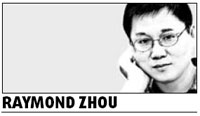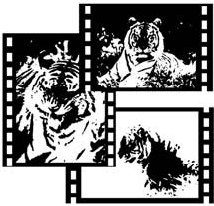Tiger, tiger! faking bright
By Raymond Zhou (China Daily)
Updated: 2008-04-19 09:08
Updated: 2008-04-19 09:08

Before the smoke and dust surrounding the South China tiger photos taken in Shaanxi province settled, someone claimed to have successfully photographed the big cat - widely believed to be extinct in China - in Hunan province. This time, unlike the still images from Shaanxi, it was a 20-second video clip with a very mobile animal.
Shortly afterwards, the local authorities, after an investigation, revealed that the whole thing was a hoax. It turned out that a television reporter had conspired with a circus manager to execute the better-than-Shaanxi idea. The circus has a Northeastern tiger. The two moved it to a patch of woods where they shot the clip. You have to admit that it was a giant leap up in the echelon of make-believe from the previous poster blowup - at least that's what most people believe it to be.
And unlike the Shaanxi authorities whose investigations are still on, the Hunan leaders were decisive. Yes, it was a fake even though this one involved a genuine tiger.
But there are similarities as well. In both cases, some local experts were quick to confirm the authenticity of the tiger!
The most brilliant bon mot came up during the investigation. A developer of local tourism who was found to have masterminded the ruse, nonchalantly justified the hoax. He told reporters that tourism is all about make-believe. "Now that you guys have killed the tiger concept, we'll have to create new ones, maybe the South China leopard."
He went on to argue that the local county is mountainous, unfit for farming. Tourism is a way out of poverty. County officials have designated it as a strategy to "feed and enliven" the people. "Tourism needs capital. But it needs creativity even more. The tiger could have been a spark."

Before I could laugh him off as insane, I walked down the memory lane to think of all the places I had visited. In one place near an old town in Yunnan, I - and a group of tourism scholars - were led to a mountainside with many totem poles that looked like 3,000 years old. We were told of the ancient civilizations that once flourished there.
Honestly, we were impressed. The whole place had some primitive power and beauty. Then, I turned to the Australian professor in our group: "Forgive my ignorance, but I've never heard of this place. It looks at least as impressive as Stonehenge."
"Well, I have to be honest, too. I haven't heard of it either, and I'm supposed to be an expert on this area," he whispered to me.
Our eyes were locked in a moment of epiphany as we burst out in one voice: "This is a theme park!"
There is nothing wrong with building a theme park that resembles a prehistoric monument, imaginary or real. But you have to inform the public.
On the contrary, the public has to play the sleuth. Another incident I remember involved a consumer who bought a terra-cotta soldier in a Beijing department store, priced 8,000 yuan. She sued the store when she found it was just an imitation. The store owner retorted: "Of course it's fake. Would a real one sell for only thousands? It would be priceless and it's against the law to trade relics of such importance."
The trouble could have easily been avoided if the item included "imitation" in its description.
I cannot but admire those who went to such lengths to get their hometowns into hot destinations of tourism. With this kind of imagination, they could have come up with ideas that hook both reporters and tourists - ideas not grounded in reality but built in castles in the air. People go and visit places of historic significance, but they may also like to be taken sometimes on rides of pure fantasy.
E-mail: raymondzhou@chinadaily.com.cn
|
|
|
|